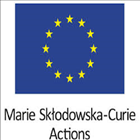Project Overview
The main aim of the research project is to develop novel advanced ceramic products in close collaboration between academic and industrial partners which will be directly oriented to industrial and social needs. The project addresses to an in-depth scientific understanding of the production processing with the aim of a production optimization and the development of new technological and industrial strategies. The proposed INTERCER2 network involves three Academic Institutions: (UNITN specialized in Engineering and Computational Mechanics with a specific expertise in ceramics; UoL specialized in Mathematical and Numerical Modelling; AU specialized in Applied Mathematics and Materials Physics) and two Industries (SACMI: a leader Industry operating in the field of ceramics and covering the entire process of ceramic production, from the powder to the final piece and design of the machineries for production; ES: an expert Industry operating in the field of informatics applied to Computer-Aided-Engineering (CAE), Virtual Prototyping (VP), process simulation and the optimization of design and production processes).
The Academia provides the Industry and the laboratories support for the development of new material testing protocols and mathematical models and numerical strategies aimed at the simulation of forming processes, analysis of defect criticality, and improvement of the production technologies. The Industry and laboratories provide the Academia with the experimental data needed for motivating and validating the mathematical models and, more in general, with their manufacturing experience. Industry is actively involved in the program, through participation of SACMI and ES.
The consortium has been created to achieve the following main research targets:
1)Modelling and experimental validation of the forming process of ceramics;
2)Modelling, design and experimental analysis of innovative ceramic products.
The goal will be achieved by
1)Improvement of the powder compaction and ceramic production process;
2)Development of novel advanced ceramic multifunctional materials and structures.
Contact Details
Institute of Mathematics and PhysicsAberystwyth University
Physical Sciences Building
Aberystwyth
Ceredigion
SY23 3BZ
Tel: 01970 622 808 Fax: 01970 622 826 Email: imaps@aber.ac.uk
